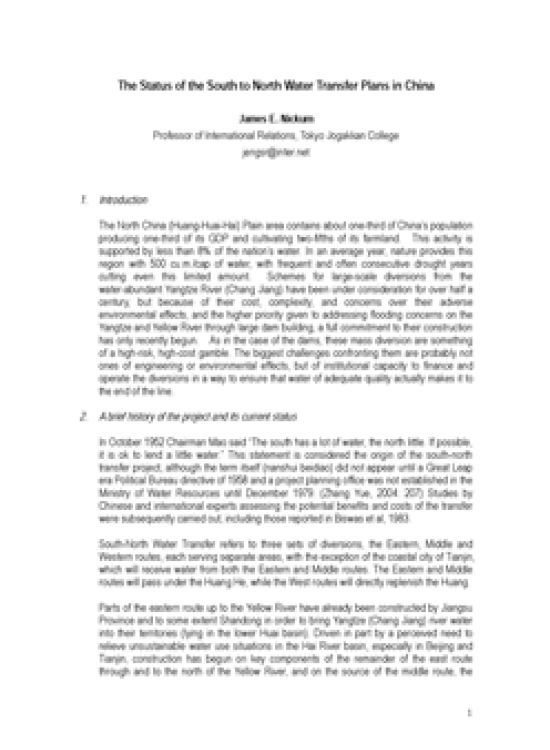The Status of the South to North Water Transfer Plans in China

Download Report by Language
Document
jamesnickumchinawatertransfer.pdf
(116.94 KB)
Citation
Nickum, James E.. 2006. The Status of the South to North Water Transfer Plans in China. New York.
The Status of the South to North Water Transfer Plans in China
Posted on: January 01, 2006
The North China (Huang-Huai-Hai) Plain area contains about one-third of China’s population producing one-third of its GDP and cultivating two-fifths of its farmland. This activity is supported by less than 8% of the nation’s water. In an average year, nature provides this region with 500 cu.m./cap of water, with frequent and often consecutive drought years cutting even this limited amount. Schemes for large-scale diversions from the water-abundant Yangtze River (Chang Jiang) have been under consideration for over half a century, but because of their cost, complexity, and concerns over their adverse environmental effects, and the higher priority given to addressing flooding concerns on the Yangtze and Yellow River through large dam building, a full commitment to their construction has only recently begun. As in the case of the dams, these mass diversion are something of a high-risk, high-cost gamble. The biggest challenges confronting them are probably not ones of engineering or environmental effects, but of institutional capacity to finance and operate the diversions in a way to ensure that water of adequate quality actually makes it to the end of the line.

